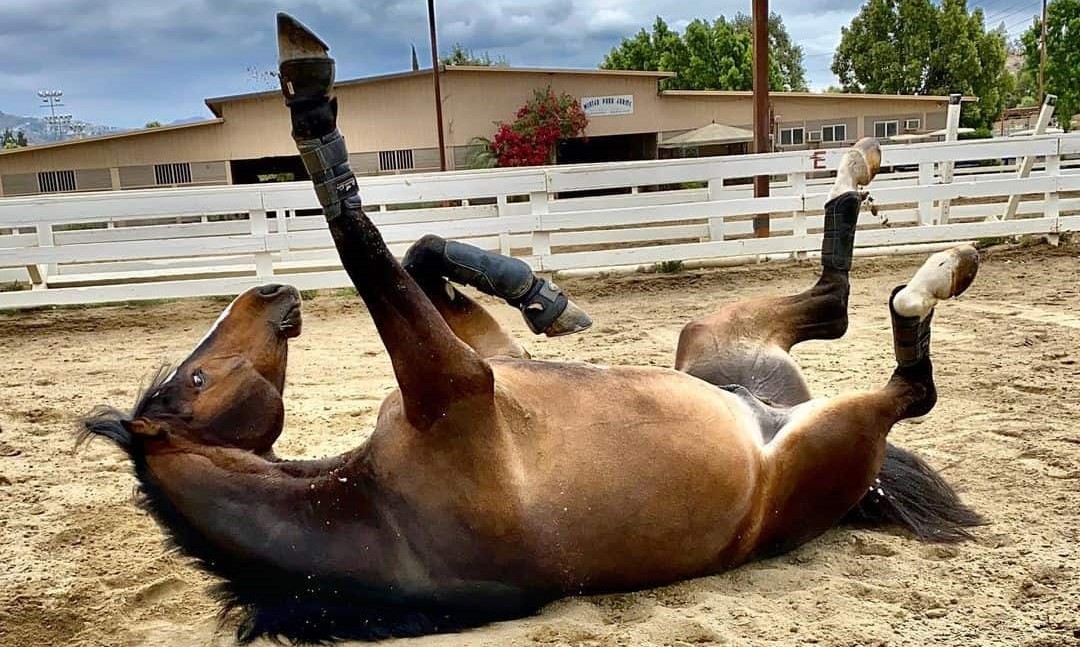If you’ve spent time around horses, you’ve probably witnessed the spectacle of a horse rolling gleefully in the mud. While this may appear puzzling or even alarming to the uninitiated, it’s actually a natural behavior with several purposes. This article explores why horses indulge in this seemingly messy activity from both behavioral and health perspectives. Understanding the reasons can help horse owners and enthusiasts appreciate this instinctual behavior and even support their horses in engaging in it responsibly.
The Natural Instinct to Roll
Firstly, it’s crucial to understand that rolling is an innate behavior in horses. In the wild, horses often roll in dust, mud, or even snow. While the reasons can vary, the behavior is deeply rooted in their instincts and serves various functional purposes.
Behavioral Reasons for Rolling in the Mud
1. Social Bonding
Rolling is often a group activity in the wild. One horse starts, and others usually follow, suggesting that it could be a social bonding exercise. Observing which horses roll one after the other may even provide insights into herd dynamics and relationships.
2. Marking Territory
Horses have scent glands in their skin, and rolling allows them to mark their scent on the ground. This can serve as a territorial signal to other horses or animals that may venture into the area.
3. Joy and Relaxation
Just like dogs often do, horses also seem to roll for the sheer pleasure of it. Rolling can be a way to stretch muscles and provides a form of tactile stimulation that many horses appear to enjoy.
Health Benefits of Rolling in the Mud
1. Skin Care
Mud acts as a natural barrier against insects and can provide relief from bug bites. It can also offer a kind of ‘natural sunscreen,’ giving some protection against UV rays.
2. Temperature Regulation
In hot weather, the moisture from mud can have a cooling effect on a horse’s skin. This can be particularly useful for horses that have difficulty dealing with heat.
3. Shedding Assistance
During the shedding season, mud can help loosen old hairs, making it easier for the horse to shed its winter coat. Rolling in the mud can be a natural grooming technique to aid in this process.
4. Relief from Irritants
Mud can also serve to provide relief from skin irritants. Rolling in mud can help a horse manage itchy skin conditions, much like how some wild animals take mud baths to manage parasites or skin irritations.
Practical Implications for Horse Owners
1. Safe Environment
If you’re a horse owner, providing a safe environment for rolling is crucial. Ensure that the area is free of rocks, debris, or any objects that could harm the horse.
2. Parasite Control
While rolling in the mud can offer some protection against insects, it’s not a substitute for a good parasite control program. Work with your vet to develop a comprehensive approach to manage parasites.
3. Post-Rolling Care
After your horse has rolled in the mud, a good brushing is usually necessary. This is also an excellent time to check for any injuries, skin conditions, or parasites.
4. Observe Behavioral Cues
Pay attention to your horse’s behavior before and after rolling. Excessive rolling could be a sign of discomfort or a skin issue that may require veterinary attention.
The Science Behind Rolling
Recent studies in ethology (the science of animal behavior) suggest that rolling could also be a form of self-maintenance behavior in horses. The activity might help realign their fur and could even help with skeletal adjustments, although more research is needed in these areas.
Conclusion
Rolling in the mud may appear messy and inconvenient, especially if you have plans for riding or showing your horse. However, understanding the multiple behavioral and health benefits can provide a new perspective on this natural activity. From serving as a social exercise and a form of physical pleasure to offering health benefits like insect protection and temperature regulation, rolling in the mud is more than just a dirty pastime.
So, the next time you see a horse taking a joyful mud bath, remember that this instinctual behavior is rooted in both biological necessity and simple equine pleasure. Observing and understanding this can deepen your appreciation for these magnificent animals and their complex behaviors.
